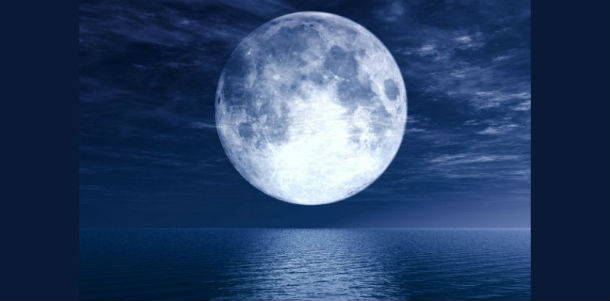Supermoon followed by king tides

On June 23, 2013 the full moon will not only be the closest to Earth for the year, but it will also appear the biggest full moon for 2013. It will be 14% bigger and 30% brighter than other full Moons of 2013. It is also known as a supermoon and it will be followed by king tides between June 22 and June 25, 2013.
King tides are also known as perigean spring tides. They are extreme high tide events that occur when the Sun and Moon’s gravitation forces reinforce one another at times of the year when the moon is closest to the Earth. They happen twice a year, but they are typically more dramatic during the winter. When king tides occur during cyclones, floods or storms, water levels can rise to higher levels and have the potential to cause great damage to property and the coastline.
King tides aren't part of climate change; they are a natural part of tidal cycles, no more than the very highest tides that occur at each place. They occur naturally and regularly, they are predictable and expected. King tide occurrences offer us a chance to visualize what normal sea levels may look like in the future.
‘King tide’ is not a scientific term, nor is it used in a scientific context. Use of the term ‘king tide’ originated in Australia, New Zealand and other Pacific nations to refer to an especially high tide that occurs only a few times per year. The King Tides Initiative began in Queensland, Australia in 2009 and was quickly noticed by British Columbia, Washington, California, and Oregon, who each began participating in the following years.
This year's king tides will be especially interesting in Australia. The biggest tide of the Australian summer has sent water flowing over roads and car parks along the Queensland coastline in Jannuary 2013. Watch the video here.
The tidal range varies around the Australian coast. According to Australia Bureau of Statistics (ABS), from the western end of Arnhem Land to the Torres Strait the range is about 3 metes and in Darwin the range can be between 7 and 9 metres. Western Australia has the largest tidal range from almost 11 m in Collier Bay to less than a metre at Geraldton! The southern coast has a small range of around 1 to 1.5m and Tasmania's tidal range varies between 1 and 3m.
King tides around Western Australia coast began on March 30, 2013 (from the north coast) and is moving along the coast to end on the south coast around June 24, 2013. The next king tide cycle will occurr on July 21, 2013 and will last for about three days.
The moon is the primary source of the gravitational forces which cause the tides. The proximity of the moon to the earth affects the magnitude of a tide at any given time. In each of its 28-day elliptical orbits, the moon reaches a "perigee," which is the closest point of its elliptical orbit to the earth. There will be a slight increase in the range of tides at the perigee of the moon’s orbit, when the moon is closest to the earth. Increases in the range of the tides is seen by a higher than average high tide and a lower than average low tide. In addition, twice each month (around the new moon and full moon), when the sun, earth, and moon are nearly in line, there is an increase in the tidal range. Such tides are called "spring tides." When the occurrence of a new or full moon coincides with the "perigee" of the moon, it’s termed the "perigean spring tides".
Sources: Witness King Tides, King Tides Factsheet
Featured image: Full moon over sea (Credit: Belle)

Commenting rules and guidelines
We value the thoughts and opinions of our readers and welcome healthy discussions on our website. In order to maintain a respectful and positive community, we ask that all commenters follow these rules.